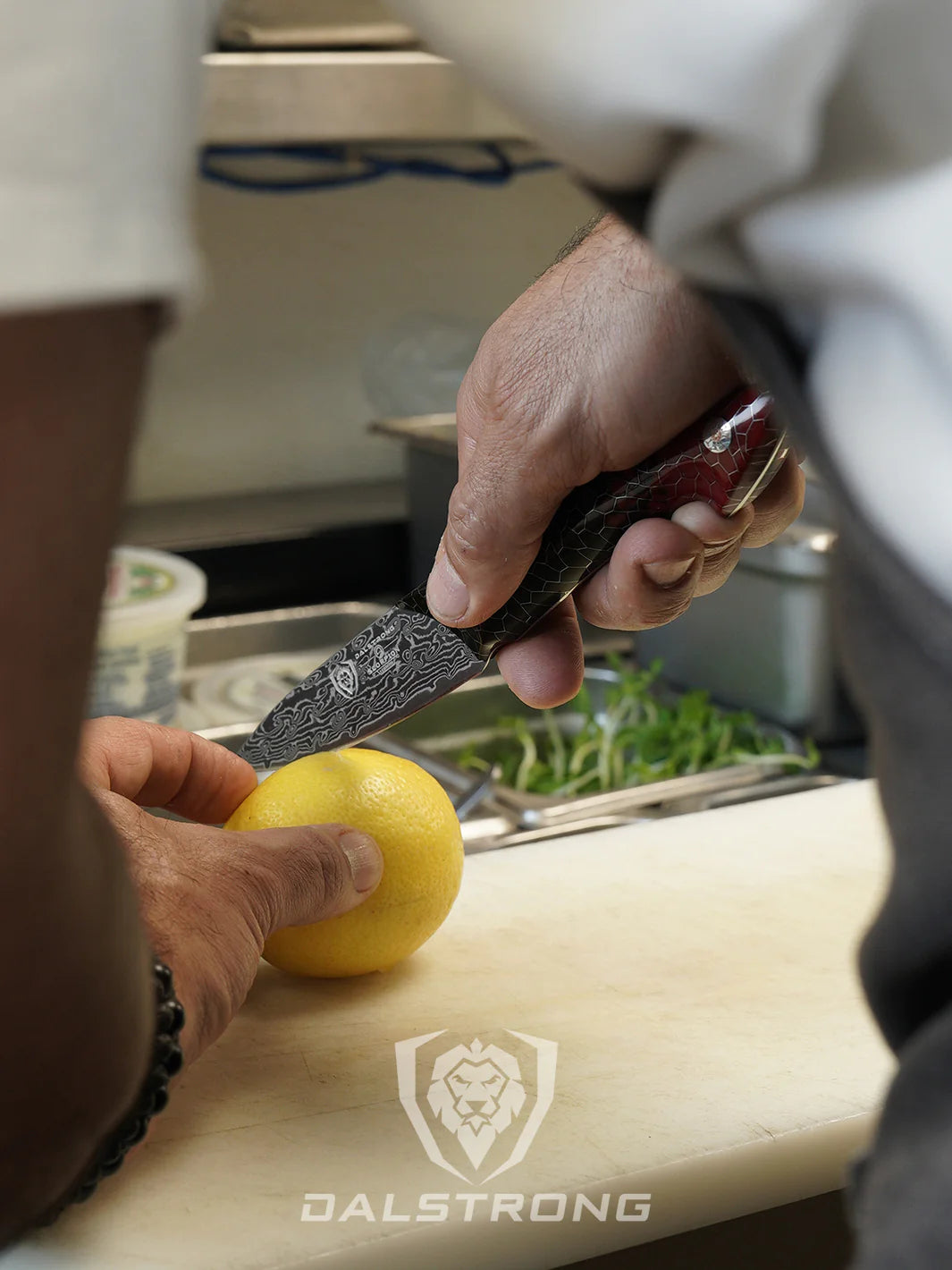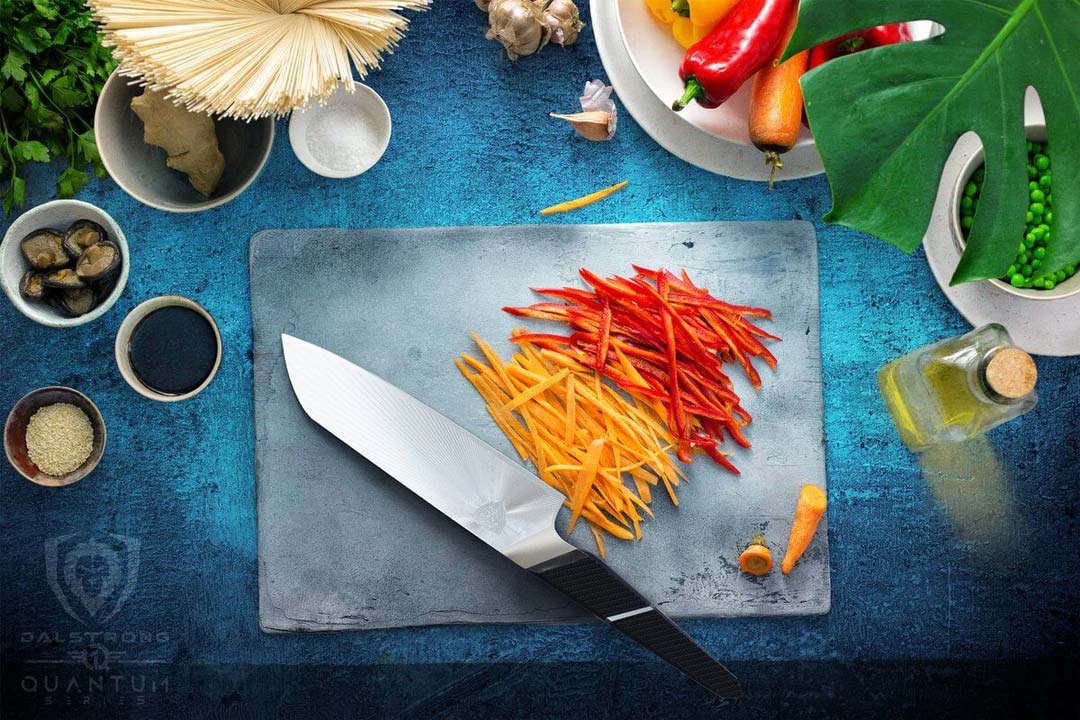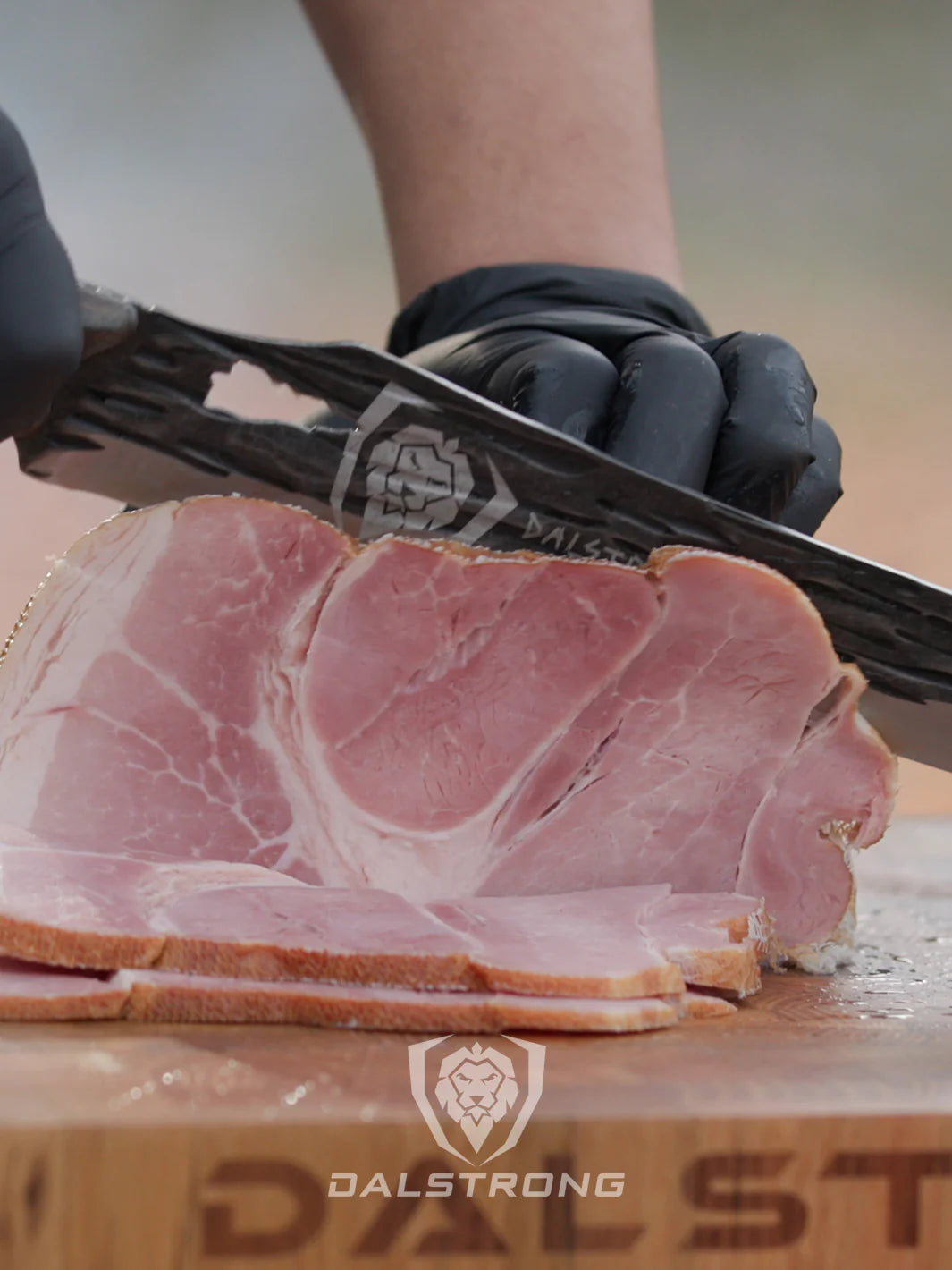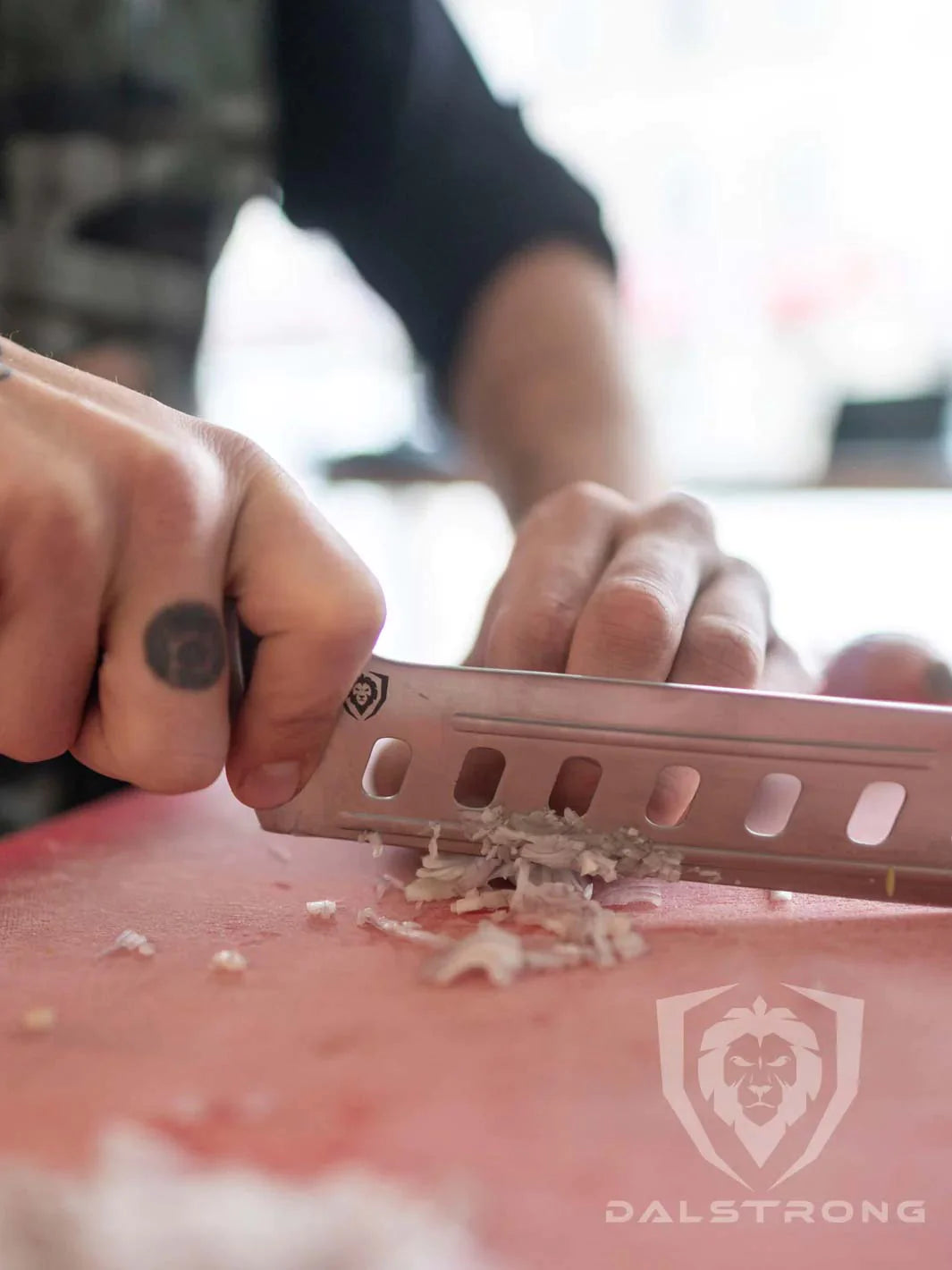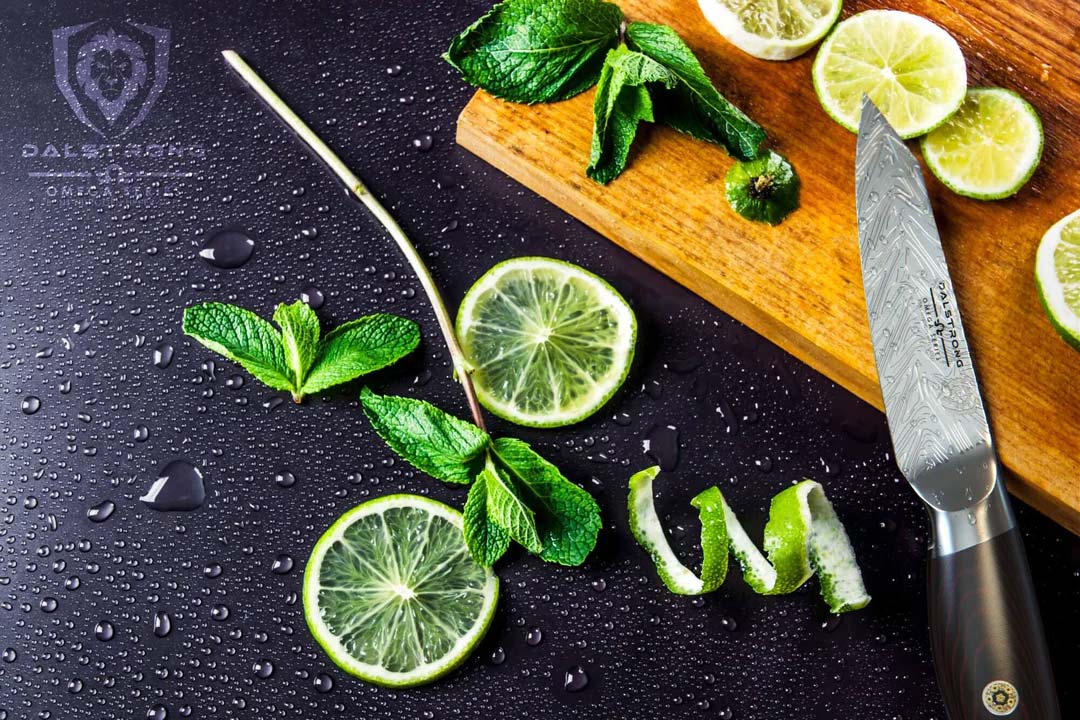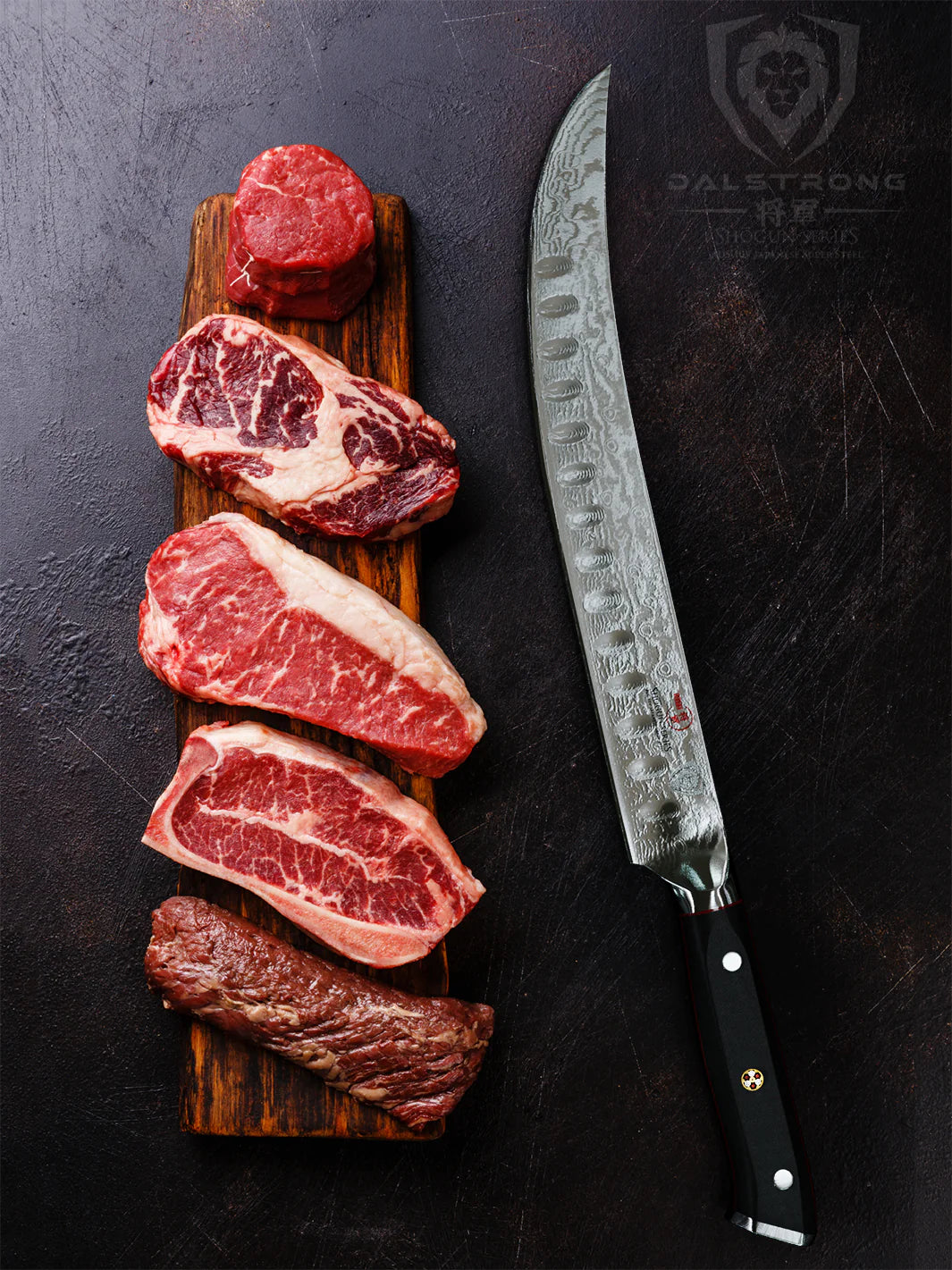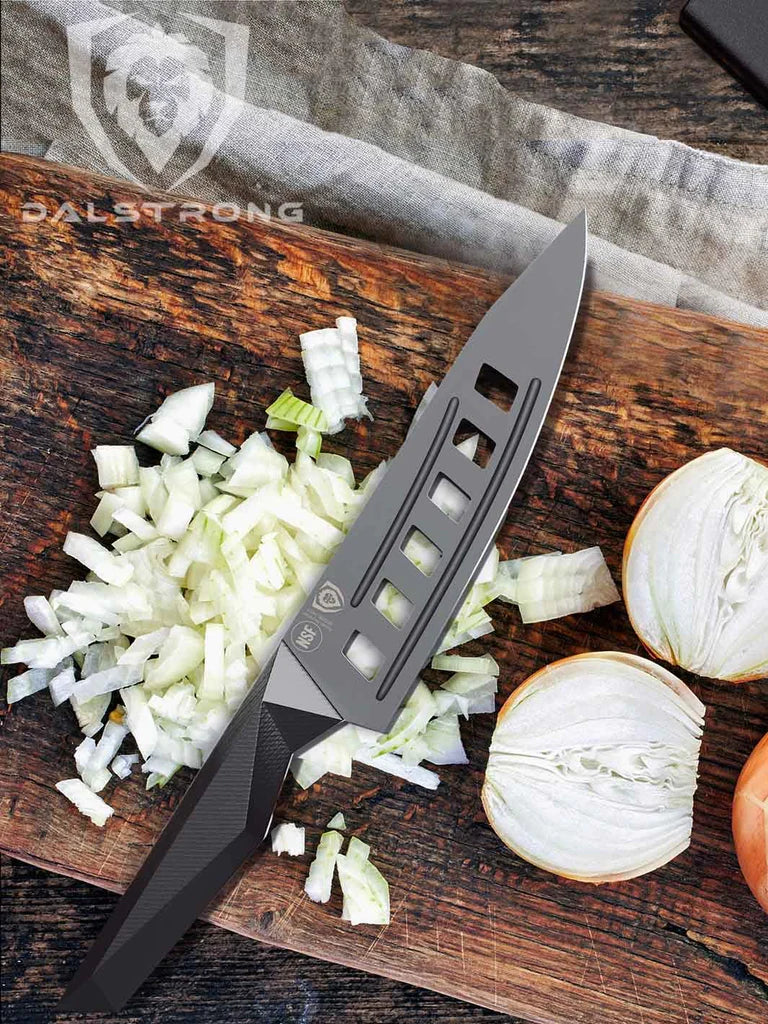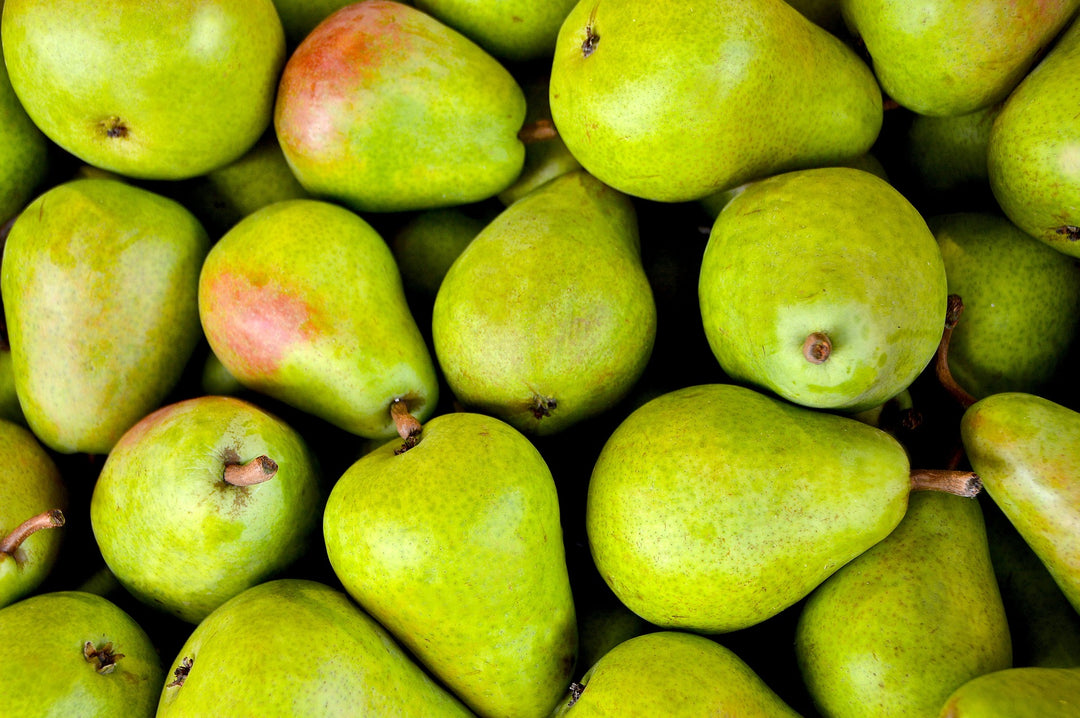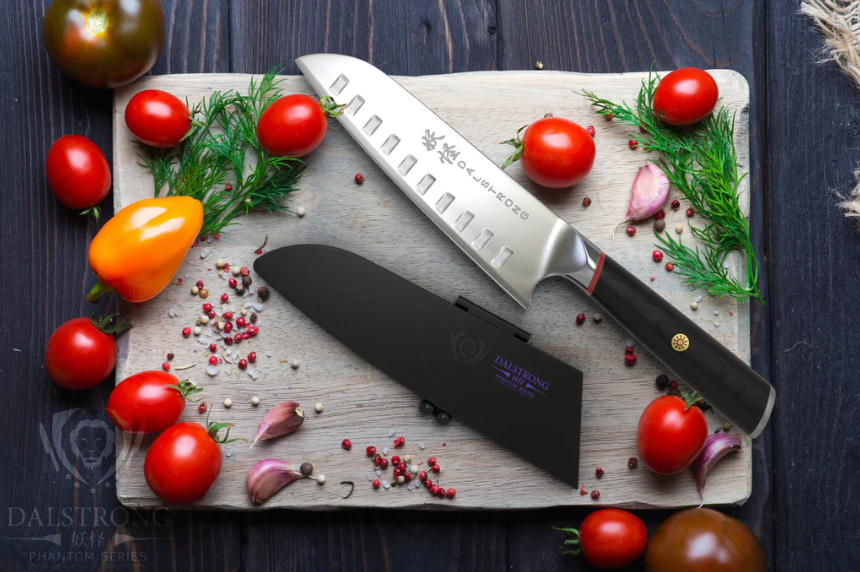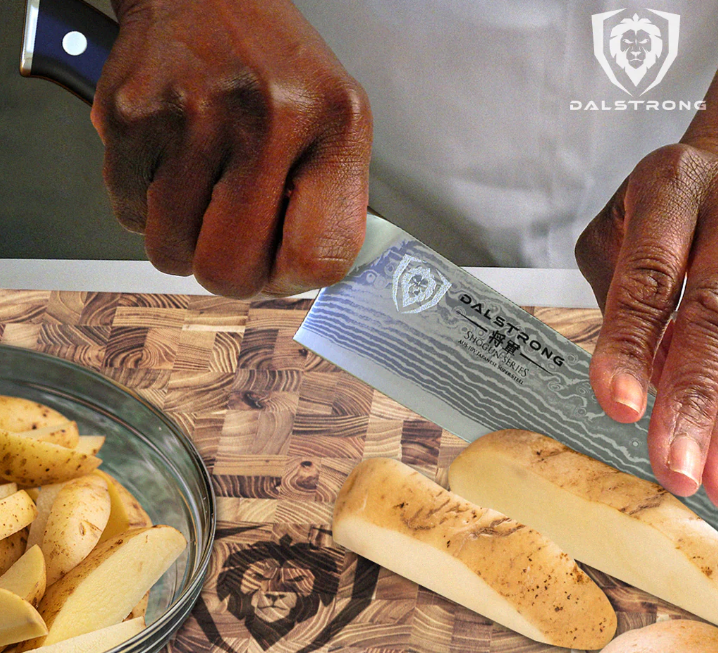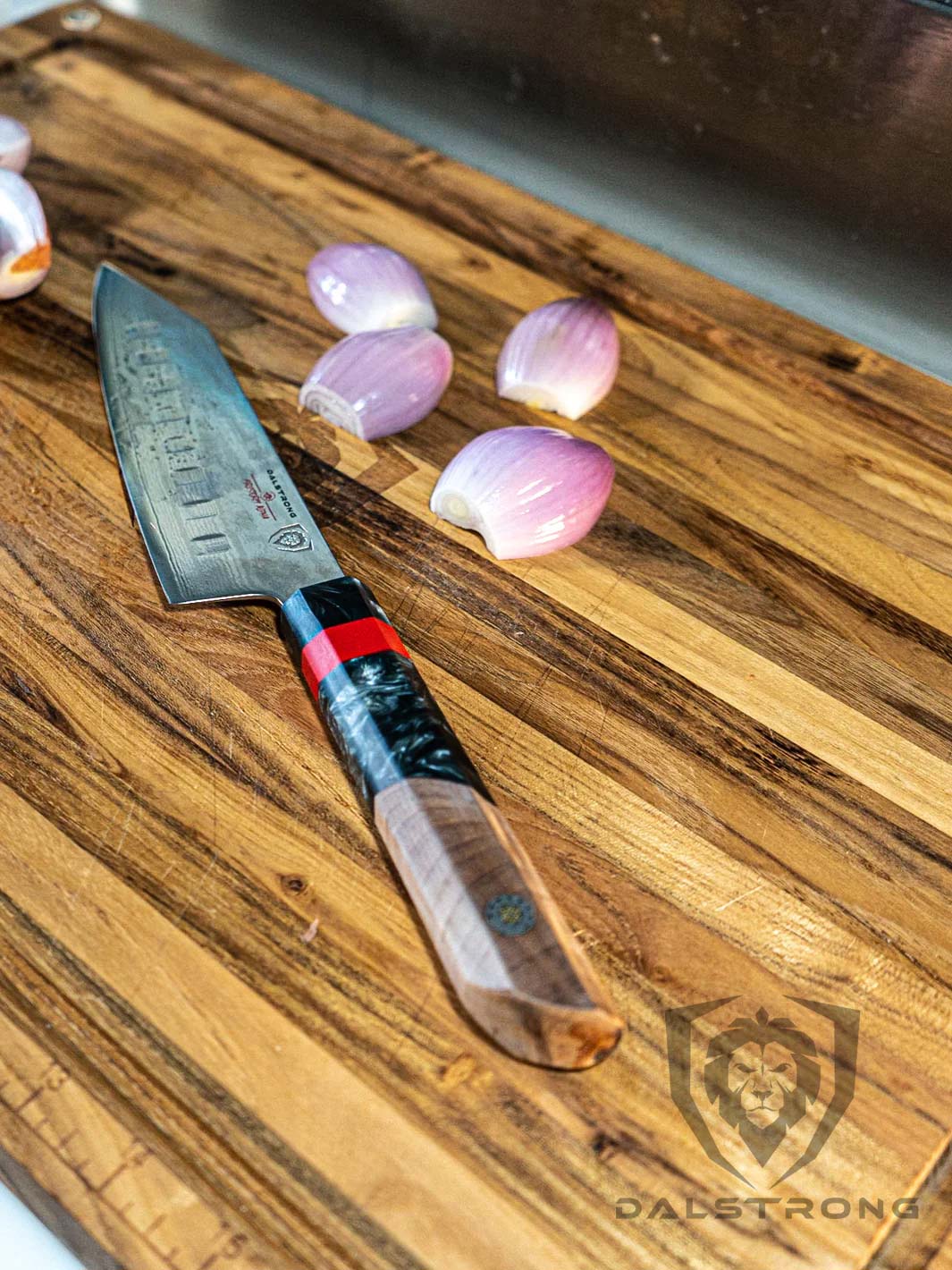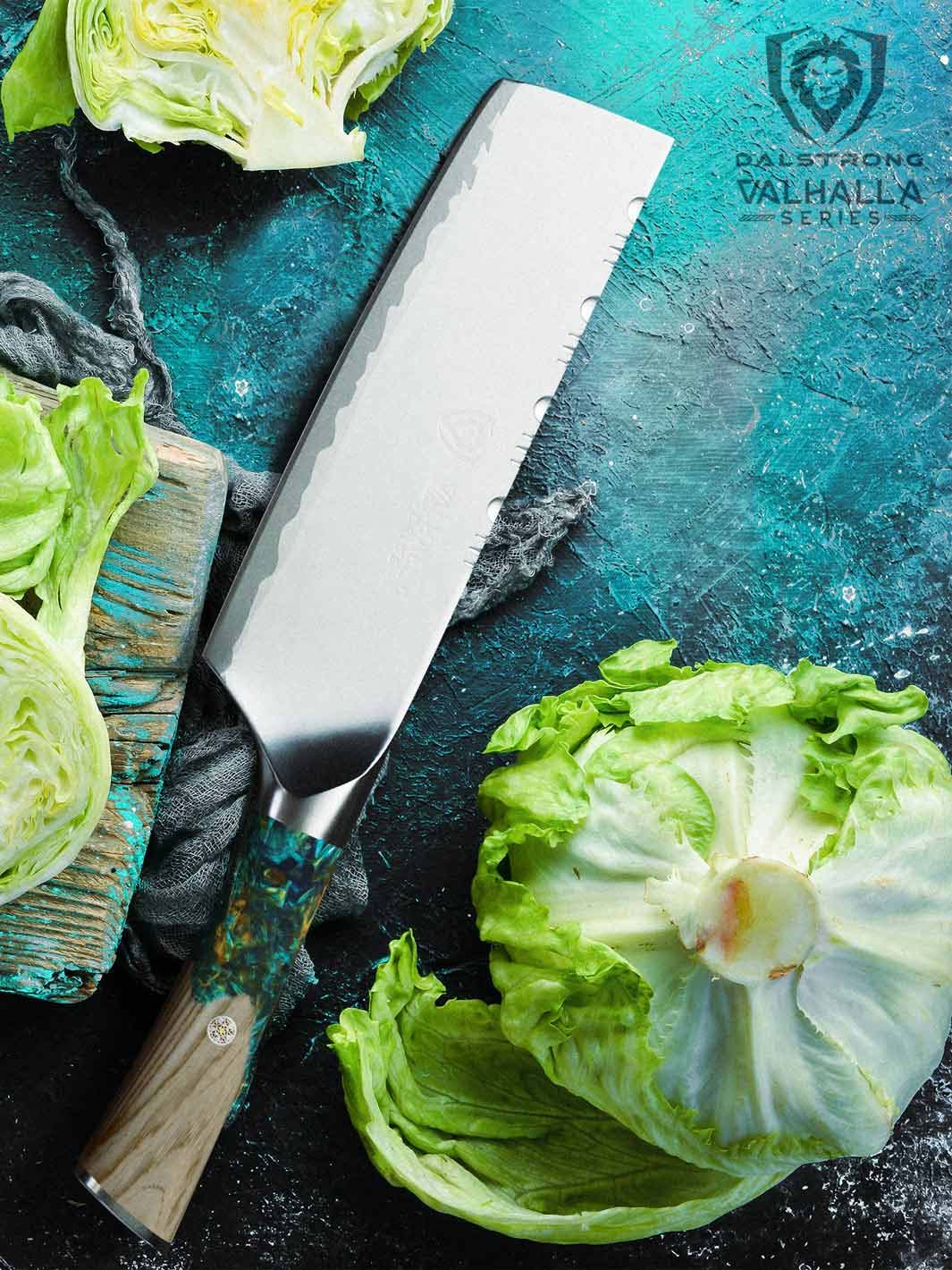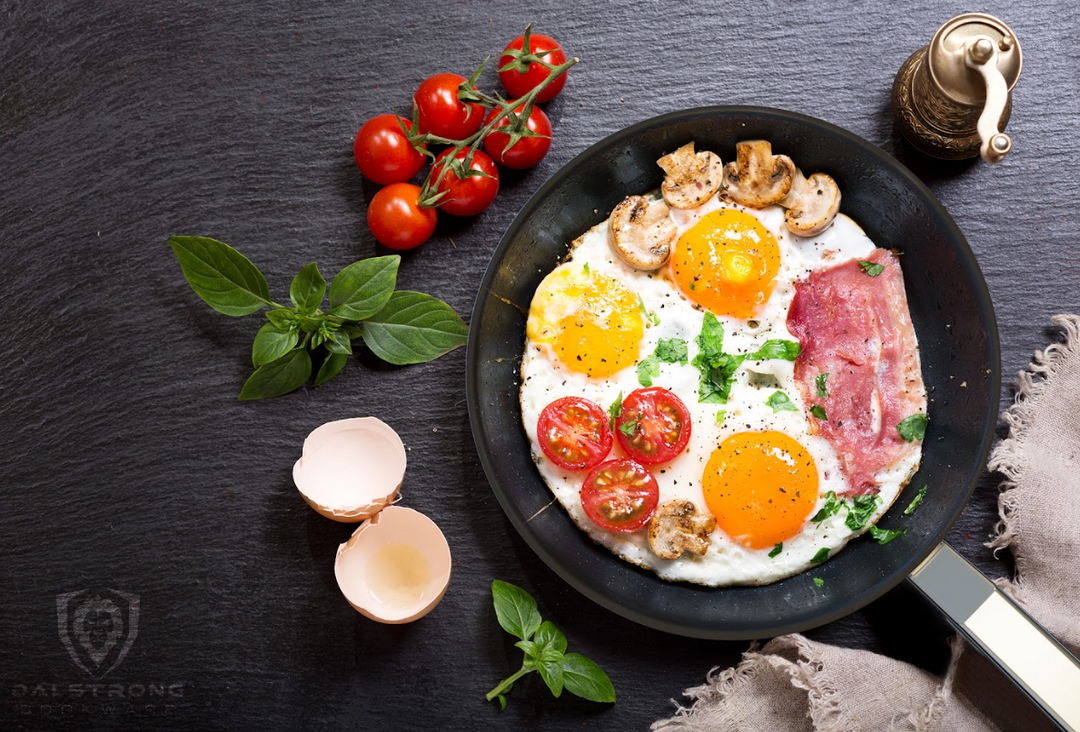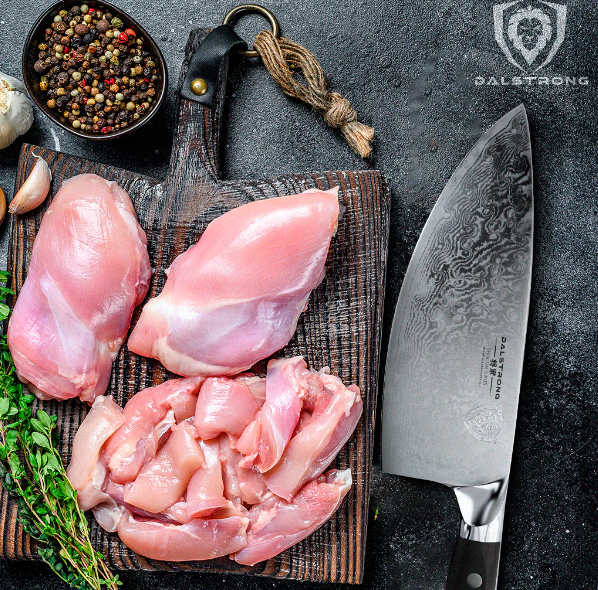Choosing a Cut of Meat for Pulled Pork
 Meat Shredding Claws | Dalstrong
Meat Shredding Claws | Dalstrong
Pulled pork is a delectable dish that celebrates the art of slow cooking and the flavorful nuances of different pork cuts. Whether prepared in a slow cooker, smoker, or another method, the result is a mouthwatering meal that caters to a variety of tastes and preferences. Experimenting with different cuts, rubs, and sauces allows for a personalized touch, making pulled pork a favorite among food enthusiasts. So, let’s find out everything there is about pulled pork!
1. What Is Pulled Pork?
 Meat Shredding Claws | Dalstrong
Meat Shredding Claws | Dalstrong
Introduction to Pulled Pork
Pulled pork is a savory and succulent dish that involves slow-cooking a specific cut of pork until it becomes tender enough to be efforlesly shredded or "pulled" apart. This culinary delight has gained immense popularity for its rich flavors and versatility, making it a favorite at barbecues, family gatherings, and casual dinners.
The Cut of Meat for Pulled Pork
To achieve the perfect pulled pork, selecting the right cut of meat is crucial. The preferred cuts for pulled pork are Boston butts or pork shoulders. These cuts, often referred to interchangeably, come from the upper part of the pig's shoulder and contain a desirable balance of meat and fat. The fat content is essential for keeping the meat moist during the slow-cooking process, contributing to the dish's tenderness.
Slow Cooker Pulled Pork Method
One popular method for preparing pulled pork is using a slow cooker. This approach involves placing the seasoned pork in the slow cooker for an extended period, allowing the meat to cook low and slow. This method is particularly convenient for those with busy schedules, as it requires minimal hands-on time. The result is melt-in-your-mouth pulled pork that's infused with the flavors of any dry rub or sauce used in the cooking process.
Dry Rubs and Sauces
Enhancing the flavor profile of pulled pork often involves the use of dry rubs and sauces. A dry rub, comprised of a blend of spices and herbs, is generously applied to the pork before cooking. This imparts a depth of flavor and forms a tasty crust on the exterior. Sauces, such as classic barbecue sauce or a unique homemade creation, can be added during or after the cooking process to further elevate the taste.
Variety of Cuts
While Boston butts or pork shoulders are the traditional choices, pulled pork can be made using alternative cuts such as picnic shoulders or pork roasts. Each cut brings its own unique texture and flavor nuances to the dish, allowing for culinary creativity.
Cooking Techniques
The key to achieving perfect pulled pork lies in the cooking techniques employed. Whether using a slow cooker, instant pot, or crock pot, the emphasis is on the "low and slow" approach. This ensures that the meat breaks down gradually, resulting in a tender and moist consistency. Techniques like smoking a pork butt add a delightful smokiness to the meat, creating a nuanced flavor profile.
Serving Suggestions
Pulled pork is incredibly versatile and can be served in various ways. Common options include stuffing it into sandwiches, incorporating it into tacos, or serving it alongside classic barbecue sides like potato salad. For those adhering to low-carb diets, pulled pork can be enjoyed on its own or with creative accompaniments like stuffed sweet potatoes.
Read about what to do with leftover pulled pork, here.
2. The Best Cut Of Meat For Pulled Pork
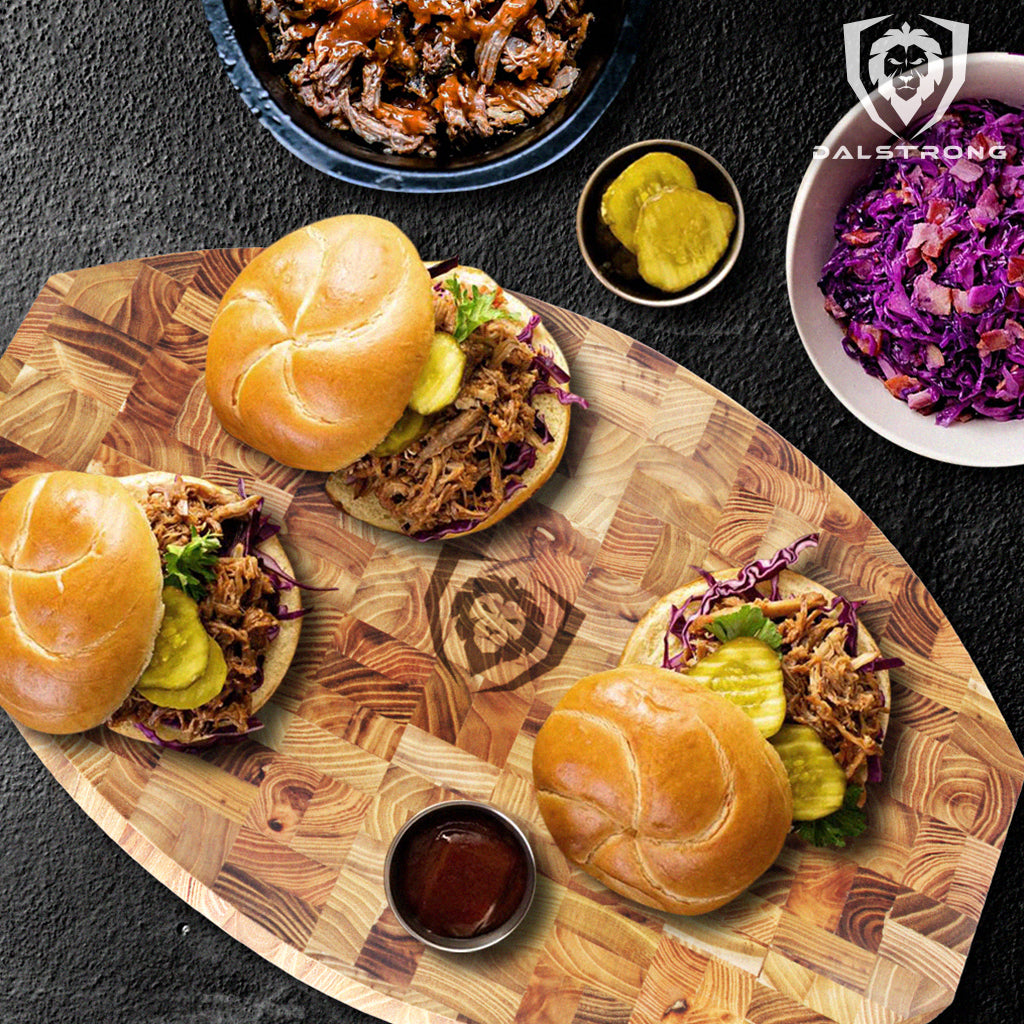 Corner Cutting Board - Teak Wood | Dalstrong ©
Corner Cutting Board - Teak Wood | Dalstrong ©
Pulled pork, a beloved dish in the realm of barbecue and slow-cooked meats, owes much of its succulence and flavor to the cut of meat used in its preparation. The choice of meat can significantly impact the final result, determining the tenderness, juiciness, and overall taste of the pulled pork. In this guide, we'll delve into the characteristics of the best cuts for pulled pork, including Boston butts, pork shoulders, and alternative options.
The debate between Boston butts and pork shoulders often arises when discussing the best cut for pulled pork. While these terms are sometimes used interchangeably, there are subtle differences. Boston butt speak of to the upper part of the pig's shoulder, known for its marbling and ideal fat-to-meat ratio.
On the other hand, pork shoulder encompasses the entire shoulder, including both the butt and the picnic shoulder. The consensus among many pitmasters and barbecue enthusiasts is that Boston butts are the preferred choice for achieving the perfect pulled pork.
Ideal Fat Content
Boston butts boast a well-distributed fat content, crucial for keeping the meat moist during the extended cooking process. The intramuscular fat, regularly referred to as marbling, enhances the flavor and texture of the pulled pork.
Consistent Results
The uniformity of Boston butts contributes to consistent cooking results. Whether you're smoking, slow-cooking, or using another method, the even thickness of the meat ensures that it cooks uniformly, preventing dry spots.
Versatility
Boston butts are versatile and forgiving, making them suitable for various cooking techniques. Whether you're using a slow cooker, smoker, or oven, Boston butts adapt well to different methods, allowing for flexibility in the kitchen.
While Boston butts are the go-to choice for many, there are alternative cuts that can be explored for a unique twist on pulled pork.
Picnic Shoulders
The picnic shoulder, the lower part of the pig's shoulder, is another option for pulled pork. It has a slightly different fat distribution and may require a bit more attention during cooking. However, when prepared with care, picnic shoulders can yield flavorful and tender pulled pork.
Pork Roasts
Some enthusiasts experiment with pork roasts for pulled pork. This broader category includes cuts from the loin and other parts of the pig. While not traditional, certain pork roasts, especially those with a good fat cap, can deliver satisfying results.
Slow Cooking
Whether using a slow cooker, crock pot, or oven, the slow-cooking method is ideal for cuts like Boston butts. The low and slow approach allows the collagen in the meat to break down slowly, resulting in tender and juicy pulled pork.
Smoking
Smoking is a favorite technique among barbecue enthusiasts. Boston butts, with their ideal fat content, are well-suited for smoking, absorbing the smoky flavors and developing a delicious bark on the exterior.
Instant Pot and Air Fryers
While not traditional, some may opt for modern appliances like the instant pot or air fryer for pulled pork. These methods can work well with cuts that benefit from a shorter cooking time, such as pork roasts. Whether you go for Dalstrong’s skillets or frying pans, they’re ideal, too!
3. How To Choose Fresh Meat For Pulled Pork
 Premium Grill Kit - 4 Piece - Tongs, Spatula, Fork, Silicone Basting Brush
Premium Grill Kit - 4 Piece - Tongs, Spatula, Fork, Silicone Basting Brush
Selecting the right cut of fresh meat is a critical step in achieving mouthwatering pulled pork. The journey from the butcher's counter to your plate involves considerations of cut, quality, marbling, and more. In this guide, we'll explore the intricacies of choosing fresh meat for pulled pork, providing insights that elevate your culinary experience.
Understanding the Cuts
To embark on the quest for the perfect pulled pork, it's essential to understand the primary cuts involved — Boston butts and pork shoulders. While these terms are often used interchangeably, distinguishing their characteristics is vital.
Boston Butts
Boston butts, situated in the upper part of the pig's shoulder, are renowned for their exceptional marbling, which contributes to flavor and tenderness. The fat content, distributed throughout the meat, ensures a moist and succulent outcome. When selecting a Boston butt, look for well-defined marbling patterns and a consistent thickness, as this ensures even cooking.
Pork Shoulders
Pork shoulders include both the butt and the picnic shoulder. The picnic shoulder, located in the lower part, tends to have a different fat distribution. While it can yield delicious pulled pork, the choice between pork shoulders and Boston butts often comes down to personal taste and cooking method.
Inspecting Freshness
Freshness is paramount when choosing meat for pulled pork. Follow these guidelines to ensure you're getting the freshest cut available:
Color
Opt for meat with a vibrant pink color. Avoid any discoloration, which may indicate aging.
Texture
The meat should be firm to the touch, with a consistent texture. Any sliminess or excessive moisture could be a sign of spoilage.
Smell
Fresh pork has a neutral, slightly sweet smell. If you detect a sour or unpleasant odor, it's a clear indication of spoilage.
Evaluating Marbling
Marbling, the distribution of fat inside the meat, is a key part in determining the flavor and tenderness of pulled pork. Look for cuts with visible marbling, as this fat will render during cooking, adding richness and juiciness to the final dish. Optimal marbling is especially crucial for cuts like Boston butts, where the fat enhances the overall quality of the pulled pork.
Considering Alternative Cuts
While Boston butts and pork shoulders are the traditional choices for pulled pork, exploring alternative cuts can add a distinctive twist to your culinary adventure:
Picnic Shoulders
If you're feeling adventurous, consider using the picnic shoulder. It has a distinct flavor and fat distribution, requiring careful preparation for optimal results.
Pork Roasts
Some cooks experiment with various pork roasts for pulled pork. While unconventional, certain roasts can deliver delightful results, offering a departure from the classic cuts.
Choosing Based on Cooking Method
The cooking technique you plan to use can influence the choice of meat. Different cuts respond uniquely to various techniques, allowing for versatility in your pulled pork preparation:
Slow Cooking
Boston butts are well-suited for slow cooking methods like using a slow cooker or oven. The extended cooking time allows the collagen in the meat to break down gradually, resulting in tender and flavorful pulled pork.
Smoking
If smoking is your preferred method, Boston butts shine in this arena. Their ample fat content absorbs smoky flavors, creating a delectable bark on the exterior.
Instant Pot and Air Fryers
For those seeking a quicker cooking process, certain cuts like pork roasts may be suitable for modern appliances like the instant pot or air fryer.
Consulting with Your Butcher
Don't hesitate to engage with your local butcher when selecting meat for pulled pork. They can provide valuable insights, recommend cuts based on your preferences, and even offer custom preparations.
Whether you stick to the classics or venture into the realm of alternative cuts, the key lies in making informed choices at the butcher's counter, ensuring that every bite of your pulled pork is a celebration of flavor and tenderness.
4. Delicious Pulled Pork Recipes To Satisfy Your Culinary Cravings
Pulled pork is a culinary delight that captures the essence of slow cooking and the rich, smoky flavors that make it a favorite among food enthusiasts. Here are three mouthwatering pulled pork recipes that showcase versatility, creativity, and, of course, irresistible taste.
Classic Slow Cooker Pulled Pork
Ingredients:
- 1 Boston butt or pork shoulder
- 2 tablespoons of your favorite dry rub
- 1 cup of barbecue sauce
- 1 onion, sliced
- 3 cloves of garlic, minced
- 1 cup of chicken or vegetable broth
Steps:
- Prep the Meat: Begin by patting the Boston butt dry with paper towels. Massage the dry rub evenly over the meat, ensuring it's well-coated. Allow it to marinate for at least an hour or overnight in the refrigerator for added flavor.
- Slow Cooker Setup: Place the sliced onions and minced garlic at the bottom of the slow cooker. Position the seasoned Boston butt on top.
- Add Liquids: Pour in the broth to keep the meat moist during the cooking process. Set the slow cooker to low heat and let it cook for 8-10 hours, allowing the meat to become tender and easily shred.
- Shred and Sauce: Once cooked, carefully shred the pork using two forks. Mix in the barbecue sauce, ensuring each strand is coated in the flavorful sauce.
- Serve: Serve the classic pulled pork on buns or alongside your favorite sides. The result is a melt-in-your-mouth pulled pork with a perfect balance of smokiness and sweetness.
Smoky Instant Pot Pulled Pork
Ingredients:
- 1 Boston butt or pork shoulder
- 2 tablespoons of smoky dry rub
- 1 cup of apple cider vinegar
- 1 cup of apple juice
- 1 tablespoon liquid smoke
- 1 onion, finely chopped
Steps:
- Rub and Sear: Coat the Boston butt with the smoky dry rub. Sear the meat on all sides in the Instant Pot using the sauté function until browned.
- Deglaze and Layer: Pour in the apple cider vinegar, scraping the bottom to deglaze the pot. Add the apple juice, liquid smoke, and chopped onions. Place the seared Boston butt on top.
- Pressure Cook: Seal the Instant Pot and set it to high pressure for 90 minutes. Allow natural release for 15 minutes before manually releasing any remaining pressure.
- Shred and Infuse Flavor: Shred the pork in the pot, allowing it to absorb the flavorful liquid. The result is a smoky and tender pulled pork with a unique depth of flavor.
- Serve: Enjoy the smoky pulled pork in tacos, sandwiches, or on its own. The Instant Pot expedites the cooking process without compromising on taste.
BBQ Smoked Pulled Pork with a Flavorful Rub
Ingredients:
- 1 Boston butt or pork shoulder
- 1/4 cup of brown sugar
- 2 tablespoons paprika
- 1 tablespoon black pepper
- 1 tablespoon salt
- 1 tablespoon chili powder
- 1 tablespoon garlic powder
- 1 tablespoon onion powder
- 1 teaspoon cayenne pepper
- 1 cup of your favorite barbecue sauce
Steps:
- Prepare the Rub: In a bowl, mix together the brown sugar, paprika, black pepper, salt, chili powder, garlic powder, onion powder, and cayenne pepper to create a flavorful rub.
- Rub and Rest: Coat the Boston butt with the rub, ensuring it's applied evenly. Allow the meat to rest for at least 30 minutes to allow the flavors to penetrate.
- Set Up the Smoker: Prepare your smoker for indirect smoking at around 225°F (107°C). Use wood chips of your choice for added smokiness.
- Slow Smoke: Place the seasoned Boston butt in the smoker and slow smoke it for 6-8 hours, or until the internal temperature reaches at least 195°F (91°C).
- Sauce: During the last hour of smoking, baste the pork with your favorite barbecue sauce. Once done, shred the meat and mix in more sauce as desired.
- Serve: Serve the BBQ smoked pulled pork on a platter, allowing your guests to savor the enticing aroma and flavor. It's an excellent centerpiece for any barbecue gathering.
Smoked Pulled Pork Tacos
These Smoked Pulled Pork Tacos promise a symphony of taste, blending the richness of perfectly smoked pork with the zest of taco seasonings. Let's dive into this culinary adventure!
Ingredients:
- 1 Boston butt or pork shoulder
- 1/4 cup of taco seasoning
- 1 tablespoon cumin
- 1 tablespoon smoked paprika
- 1 teaspoon garlic powder
- 1 teaspoon onion powder
- Salt and black pepper to taste
- Corn or flour tortillas
- Shredded lettuce, diced tomatoes, and sliced avocados for topping
- Salsa and sour cream for garnish
Steps:
- Prepare the Taco Seasoning Rub: In a bowl, combine the taco seasoning, cumin, smoked paprika, garlic powder, onion powder, salt, and black pepper to create a flavorful rub for the pork.
- Rub and Marinate: Generously rub the Boston butt with the taco seasoning mix, ensuring an even coating. Allow the pork to marinate for at least an hour or preferably overnight in the refrigerator to absorb the vibrant taco flavors.
- Set Up the Smoker: Preheat your smoker to a temperature of 225°F (107°C) with your choice of wood chips. The combination of slow smoking and taco seasoning will impart a unique and savory taste to the pulled pork.
- Smoke to Perfection: Place the seasoned Boston butt in the smoker and let it smoke for 6-8 hours, or until the internal temperature reaches around 195°F (91°C). The slow smoking process ensures that the pork absorbs the essence of the taco seasoning while achieving that coveted smokiness.
- Shred and Assemble Tacos: Once the pork is done, carefully shred it using forks. Warm the tortillas and assemble your tacos with the smoked pulled pork as the star. Top with shredded lettuce, diced tomatoes, sliced avocados, and your favorite salsa and sour cream.
- Serve and Enjoy: Present these delectable Smoked Pulled Pork Tacos to your eager guests. The combination of smoky, seasoned pork with the freshness of taco toppings creates a culinary masterpiece that's sure to be a hit.
5. Recommended Dalstrong Tools To Use
The Dalstrong Diamond Detailing method (D3) ensures an exceptionally sharp 13-15° edge. With a partial tang for robustness, ice-tempered resilience, and a polished spine for comfortable grip, this knife is an epitome of craftsmanship. The handle, featuring laminated pakkawood, a 'phantom spirit' mosaic, and a D-shaped design, offers superior control, comfort, and agility.
PROS:
- The precision-forged 6.5” blade, meticulously sharpened to 13-15°, guarantees swift and effortless cuts.
- Rockhollow divots minimize friction, ensuring a smooth glide along bone contours for precise boning.
- Premium laminated pakkawood handles from Spain provide superior strength and an attractive, sanitary build.
CONS:
- While the knife's polished spine enhances grip comfort, some users may find it a bit too pronounced for extended use.
- The intricate engravings, though adding a touch of sophistication, may require extra attention during cleaning to maintain their detailed beauty.
Crafted from 5-layer stainless steel with a 60+ Rockwell Hardness, the ultra-sharp blade, hand-sharpened to 8-12° per side, ensures swift separations of flesh and bone. The celestial resin handle, reinforced with stabilized wood and a stainless steel bolster, exhibits otherworldly power and grace, while the Valhalla-embossed leather sheath adds a warrior-worthy touch to its protection.
PROS:
- The 6” precision-forged blade, with a sandblasted finish, offers remarkable sharpness and wear resistance.
- The celestial resin handle, reinforced with stabilized wood and a stainless steel bolster, provides structural sturdiness and impact resistance.
- The Valhalla-embossed leather sheath not only protects the knife but adds a touch of Viking-inspired style to its storage.
CONS:
- Some users may find the 8-12° per side edge, while providing exceptional sharpness, requires careful handling to avoid chipping.
- The celestial resin handle, while offering durability, may feel weightier to some users, impacting extended use comfort.
3. Slicing & Carving Knife 10"
The ergonomic G-10 Garolite handle, meticulously constructed for heat resistance and military-grade durability, provides superior control and comfort. Hand-finished to a mirror polish at a remarkable 8-12° angle per side, this set not only performs but also dazzles with refinement, complete with an engraved Dalstrong lion head logo and a copper mosaic pin.
PROS:
- The 9” precision-forged blade, with a Rockwell hardness of 62+, delivers exceptional performance, edge retention, and a striking Tsunami Rose pattern.
- Hand-finished to an acute 8-12° angle per side using the Dalstrong Diamond Detailing (D3), the blade ensures scalpel-like sharpness for precise slicing.
- The set includes a beautifully forged meat carving fork with a G10 handle and mosaic rivet, enhancing stability and securing meat during carving.
CONS:
- The exquisite craftsmanship and high-quality materials may result in a relatively higher price point compared to other carving knife and fork sets.
- The intricate pattern and hand-finished edge, while adding to the aesthetic appeal, may require extra care during cleaning to maintain their pristine condition.
4. Carving Knife & Fork Set 9"
Hand-finished with the Dalstrong Diamond Detailing (D3) method, the blade boasts a razor-sharp edge at a staggering 8-12° angle per side, promising buttery smooth cuts. The set is complemented by an ergonomic design, a copper mosaic pin, and a premium-quality polymer Dalstrong PerfectFit saya for protection.
PROS:
- The precision-forged 9” blade with a Japanese AUS-10V core delivers exceptional performance, edge retention, and a visually stunning Tsunami Rose pattern.
- The G-10 Garolite handle provides military-grade strength, imperviousness to heat and moisture, and an ergonomic design for superior hand control and comfort.
- The set includes a beautifully crafted meat carving fork with a G10 handle, adding resilience and securing meat during carving.
CONS:
- The intricate craftsmanship and premium materials may contribute to a higher price point compared to other carving knife and fork sets.
- The Tsunami Rose pattern and hand-finished edge, while enhancing the aesthetic appeal, may require extra care during cleaning to maintain their pristine condition.
This medieval-inspired design cleaver knife is 6mm thick and robust to no end. Its razor-sharp edge at 16-18° per side ensures precision, while the extra-thick G10 handle provides a secure grip for efficient chopping through beef, poultry, pork, and more. The cleaver comes with a handcrafted acacia wood stand for stylish storage and display, and a PerfectFit Dalstrong sheath for on-the-go protection.
PROS:
- The precision-forged cleaver, made from premium high-carbon 7CR17MOV Steel, is heat-treated to 60HRC, ensuring unparalleled chopping power.
- The razor-sharp edge at 16-18° per side provides precision and efficiency in cutting through various meats and tough-skinned fruits and vegetables.
- The handcrafted acacia wood stand adds both style and functionality, serving as a display and storage solution for this formidable culinary tool.
CONS:
- Due to its heavyweight and thickness, some users may find the cleaver less suitable for delicate tasks or prolonged use.
- The menacing design, while appealing to enthusiasts, may not suit those looking for a more conventional or minimalistic kitchen tool.
6. Frequently Asked Questions
What is best cut for pulled pork?
The best cut for pulled pork is often the pork butt, also known as Boston butt, due to its ideal combination of marbling and connective tissue, ensuring succulent and flavorful results in recipes.
Is pork butt and pork shoulder the same?
Pork butt and pork shoulder are essentially the same cut, originating from the upper shoulder of the pig and commonly used interchangeably in pulled pork recipes.
What is pulled pork meat?
Pulled pork meat is typically sourced from slow-cooked and shredded pork butt or pork shoulder, resulting in tender, flavorful strands perfect for various culinary creations.
Is a pork loin good for pulled pork?
While pork loin is a lean and tender cut, it's not the best choice for pulled pork, as the higher fat content in cuts like pork butt enhances the juicy and melt-in-your-mouth texture desired for this dish.





































































































































































